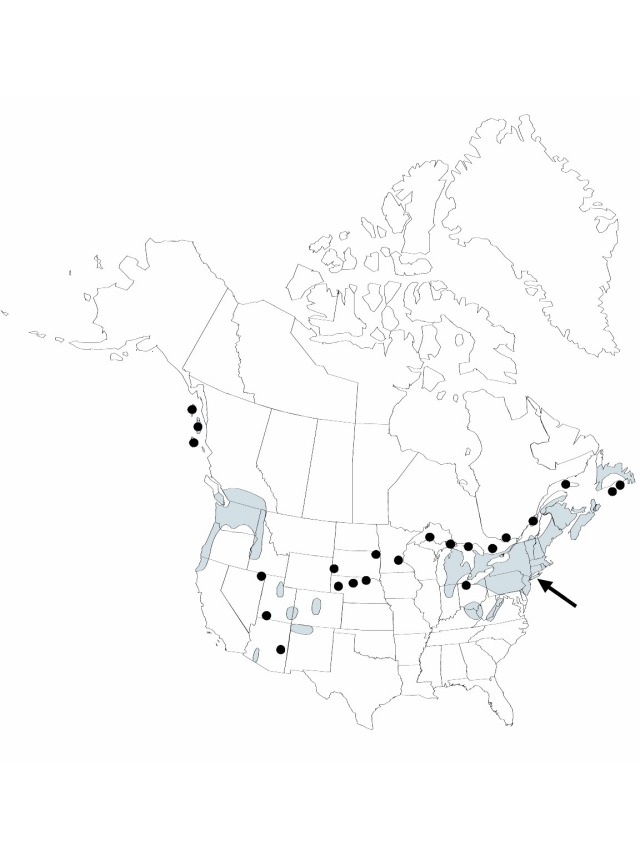Difference between revisions of "Juncus articulatus"
Sp. Pl. 1: 327. 1753.
FNA>Volume Importer |
FNA>Volume Importer |
(No difference)
| |
Revision as of 20:58, 16 December 2019
Herbs, perennial, rhizomatous to nearly cespitose, 0.5–6(–10) dm. Rhizomes 2–3 mm diam., not swollen. Culms erect to decumbent (and floating), terete, 1–3 mm diam., smooth. Cataphylls 1, maroon to straw-colored, apex acute to obtuse. Leaves: basal 0–2, cauline (1–)3–6; auricles 0.5–1 mm, apex rounded, scarious; blade green to straw-colored, terete, 3.5–12 cm × 0.5–1.1 mm. Inflorescences terminal panicles of 3–30(–50) heads, 3.5–8 cm, branches spreading; primary bract erect; heads 3–10-flowered, obpyramidal to hemispheric, 6–8 mm diam. Flowers: tepals green to straw-colored or dark brown, ovate to lanceolate, 1.8–3 mm; outer tepals with apex acute or acuminate; inner tepals with apex acute acuminate to obtuse; stamens 6, anthers equal to filament length. Capsules exserted ca. 1 mm beyond perianth, chestnut brown to dark brown, imperfectly 3-locular, ellipsoid or ovoid, 2.8–4 mm, apex acute proximal to beak, valves separating at dehiscence. Seeds obovoid, 0.5 mm, not tailed. 2n = 80.
Phenology: Fruiting mid summer–fall.
Habitat: Wet ground in ditches, lake and stream margins, and a variety of other habitats, often a calciphile
Elevation: 0–3000 m
Distribution

St. Pierre and Miquelon, B.C., N.B., Nfld. and Labr. (Nfld.), N.S., Ont., Que., P.E.I., Alaska, Ariz., Colo., Calif., Conn., Idaho, Ind., Ky., Maine, Mass., Mich., Minn., Nebr., Nev., N.H., N.J., N.Mex., N.Y., N.C., Ohio, Oreg., Pa., R.I., S.Dak., Utah, Vt., Va., Wash., W.Va., Eurasia.
Discussion
Juncus articulatus hybridizes with J. brevicaudatus (= J. ×fulvescens Fernald), J. alpinus (= J. ×alpiniformis Fernald), J. nodosus, and J. canadensis.
Juncus articulatus var. obtusatus Engelmann appears to be intermediate with J. alpinus. It has spreading inflorescence branches but obtuse inner tepals. This may represent a backcross with J. alpinus. Recent evidence suggests that J. alpinus is a polyploid species with J. articulatus as one of its parents.
Selected References
None.
